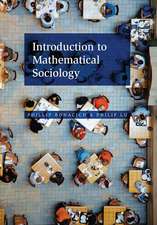You want it to be one way, but it's the other way: How David Simon's The Wire Maintains African American Stereotypes
Autor Eike Rüdebuschen Limba Engleză Paperback – 23 mar 2015
Preț: 470.35 lei
Preț vechi: 580.67 lei
-19% Nou
Puncte Express: 706
Preț estimativ în valută:
90.01€ • 92.99$ • 74.91£
90.01€ • 92.99$ • 74.91£
Carte tipărită la comandă
Livrare economică 25 martie-08 aprilie
Preluare comenzi: 021 569.72.76
Specificații
ISBN-13: 9783954893911
ISBN-10: 3954893916
Pagini: 100
Dimensiuni: 155 x 220 x 8 mm
Greutate: 0.14 kg
Editura: Anchor Academic Publishing
ISBN-10: 3954893916
Pagini: 100
Dimensiuni: 155 x 220 x 8 mm
Greutate: 0.14 kg
Editura: Anchor Academic Publishing
Notă biografică
Eike Rüdebusch, born 1985 in Germany, has a master's degree in American Studies and practical Literary and Media Studies as well as a bachelor's degree in Literary, Cultural, and Media Studies. He studied at the Universities of Duisburg-Essen and Siegen in Germany, as well as at Arizona State University in the United States. Early on in his academic endeavors, Eike Rüdebusch started focusing on African American culture, its history and politics. Already with his bachelor thesis on the influence of Barack Obama's first presidential campaign on political Rap, he underlined his interest in showing the interdependency of culture and its surrounding political conditions













